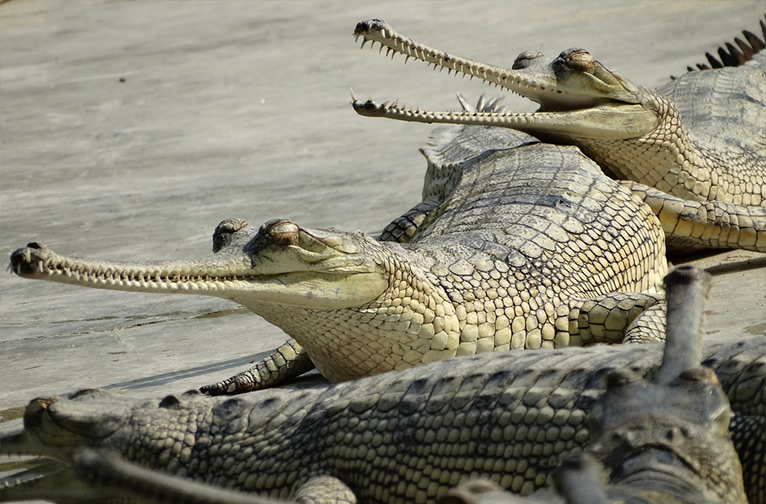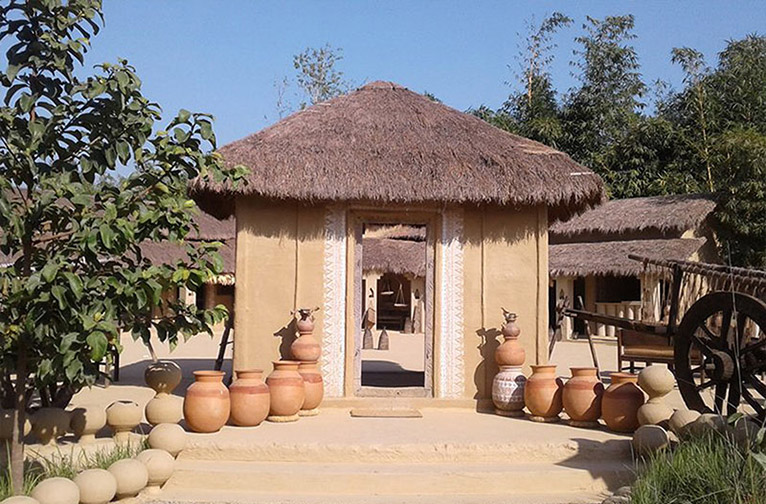The world celebrates ‘National Park Week’ on April 22-30, 2023. It is with untrammelled joy that we put the spotlight on that incredibly wonderful wildlife treasure trove–Nepal’s Chitwan National Park, the centuries-old stamping ground of some of the world’s most exotic, nay, even most endangered, mammalian species–the Royal Bengal Tiger and One-horned Indian Rhinoceros. Celebratory weeks such as these are a wonderful way to introduce newbie wildlife enthusiasts and kids, to the joys of visiting a National Park, and early lessons on how to respect wildlife denizens and their right-of-way in their natural habitat.
The Chitwan National Park, Nepal’s first National Park and one of the world’s finest national parks is a UNESCO World Heritage Site; it also features a Ramsar Wetland Site, the Beeshazari Tal in its buffer zone 10 km away from the gateway town of Sauraha. The Park lies in the embrace of a Conservation International-designated Conservation Hotspot and a WWF Global 200 Eco-region.
Just 160m away from Kathmandu the national park falls along the Indian border in the remote region of the Terai in the lowlands of south-central Nepal in the flood plains of the Rapti and Riyu rivers, tributaries of the great Narayani River. Once the exclusive hunting preserve of the Nepali royals, it was declared a National Park in 1984 with an area of 54,400 ha. Its extensive expanse (almost 70 percent) of sal forests, savannah grasslands, mixed forests and riverine forests support a fantastic array of flora and fauna.
Chitwan, which translates as "Heart of the Jungle", is home to 68 species of mammals, about 600 avifaunal species, 56 species of herpetofauna and 126 species of fish. October to March is the best time to visit. The gateway town, Sauraha, on the outskirts of the park is the nearest place to stay. You can also visit the nearby Tharu Cultural Museum and Research Center at Bachhauli.
Sustainable Practices
Also, the first site to be accredited as a Conservation Assured Tiger Standards (CA|TS) site, Chitwan was at the heart of a plastic-free initiative launched in 2019, which was expected to help preserve the natural habitat and protect wildlife such as tigers, rhinos, elephants and freshwater species while opening up local entrepreneurship opportunities in non-plastic alternative products. Nepal is also mentioned as the only one of 13 tiger range countries that’s on track to meet a 2022 pledge to double its wild tiger population from that of 2010. What’s helping the numbers grow is the country’s hard line on anti-poaching activities and close interfaces with communities living in proximity to tiger habitats.
Also in place are initiatives at the community level to mitigate animal-human face-offs by fencing off the NP from adjoining villages and compensating these communities for any loss of animals or crops, reducing their need for firewood from inside park and propelling tiger tourism with the aim to drive community development.
Unmissable Treats
Jeep Safaris offers excellent opportunities for exploring Chitwan’s great wealth of botanical splendour and wildlife-spotting. Canoe rides are a nice and leisurely option to survey the jungle from your prospect from the Rapti or Narayani Rivers. Keep your eyes peeled for sunbathing crocs and avifaunal species looking for tasty morsels in these waterways.
A guided jungle walk brings you up-close and personal with its botanical wonders and the chance of spotting some elusive wild creature. If you are a birding enthusiast, your binocs and bird book will prove quite handy, given the great avifaunal wealth of Chitwan. You do, however, need to play by the rules of the jungle wherever you choose to roam!
Cultural Interfaces


Meeting local communities can also provide a deeply rewarding cultural heritage experience. There are several settlements of the ethnic groups known as the Tharu people, who have made the Terai their home around Chitwan. It is the largest ethnic group in Nepal. Living off the land, the Tharu people have learned the ways of abiding in harmonious unity with the environs of Chitwan and helping safeguard its natural resources. Plan to explore the running of a village by these friendly folk who will invite you to sample some local dishes and even provide some cultural diversions as their native music, dance and skits. To enjoy deeper insights into Tharu culture, one can visit the Tharu Cultural Museum and Research Center at Bachhauli, established in 2005 near Sauraha. On display are some excellent murals and artefacts and native costumes–a collective effort of the community itself. The museum complex also houses a Gurau clinic. A gurau is a traditional healer in the community. The clinic is managed by a Gurau group under the Chitwan Tharu Traditional Knowledge Management Group; there’s also a medicinal plant nursery explore. At the souvenir shop, pick up great giveaways for family and friends back home.
Chitwan National Park’s stunning landscape is an alluring jewel in Nepal’s tourism arsenal to bring in more visitors, which will help the local economy and safeguard its natural heritage.